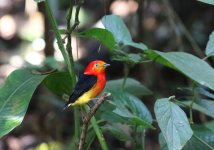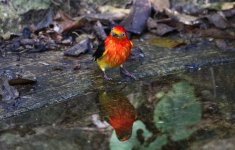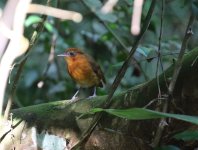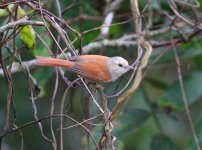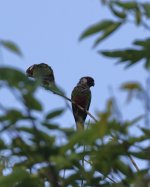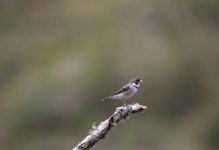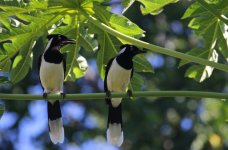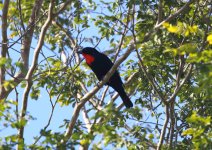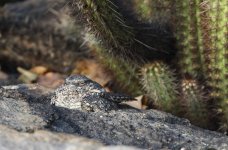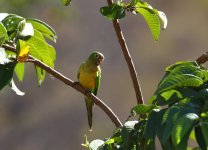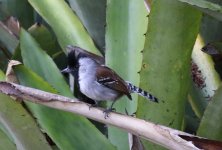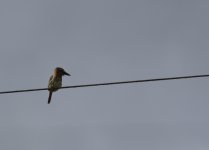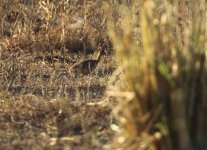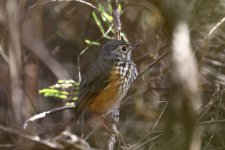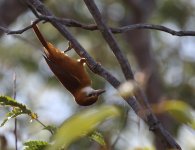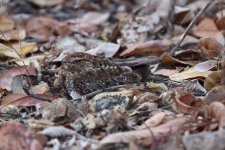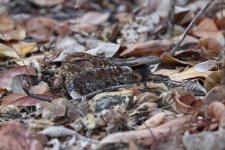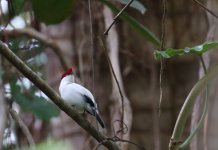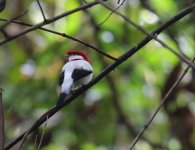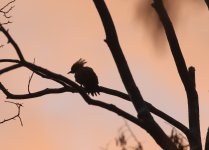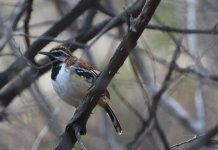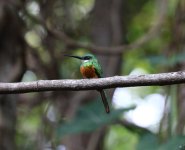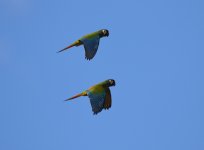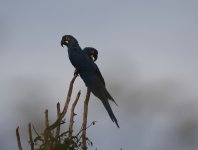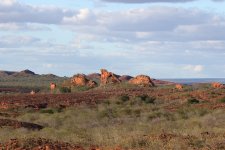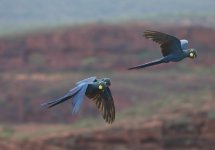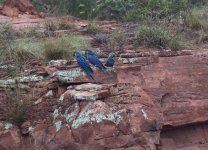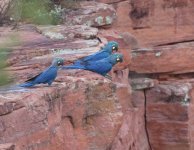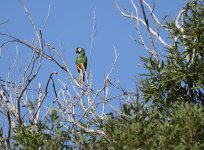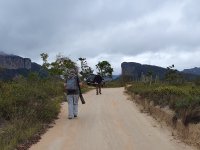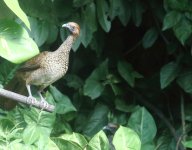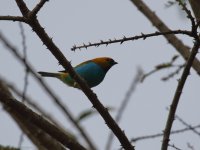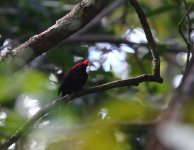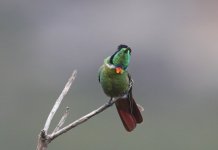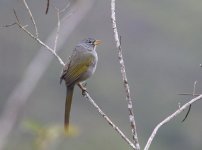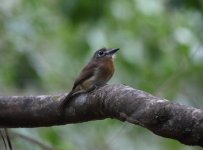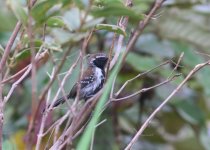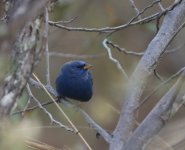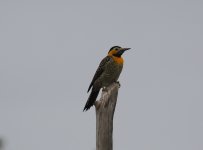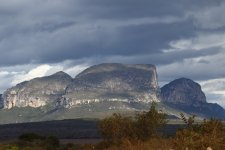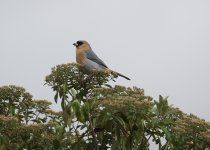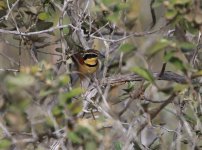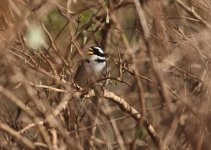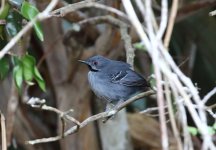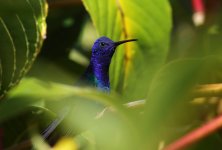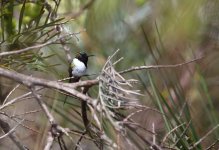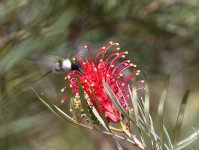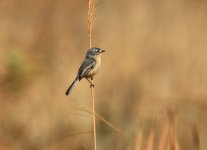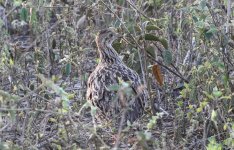North East Brazil Trip Report - August 23
We booked with Brazil Birding Experts after great feedback from our friends Roland and Ann who went to Brazil twice with BBE (Ciro) and also good reviews on Birdforum.
Booking was all done with Joanna once we had agreed a date when Ciro was free to guide us. Joanna booked us accommodation before and after the trip and managed to change it when our plans changed slightly. Only slight problem was paying in Brazil Reais (none of my foreign currency accounts worked so I paid in dollars and covered the conversion fee). As we changed hotels we were given a refund that Ciro delivered to us in cash.
We had done Brazil and Guyana independently with just some local guides the last couple of trips for Brazil (Iguazu, Pantanal, Amazon and area around Rio in Brazil) but I think I’m getting lazy so didn’t really consider it this time, plus there were lots of range restricted birds that required access to private land or needed detailed directions.
Travel Day
Reasonably early start and drive to Manchester Airport, car left at meet and greet. Check-in was just open for Executive Class as we arrived, so straight through to the lounge for breakfast.
We flew with Air Portugal from Manchester to Fortaleza via Lisbon, we had the Brasillian and Portugese Para swimming teams on the plane to Lisbon after the championships in Manchester so loading and take off was slightly delayed, it meant that we only had 1.5 hours in Lisbon before our connecting flight so not worth the trip to the lounge which would also have meant going through passport control. So we just waited at the gate.
We arrived in Fortaleza on time and being at the front of the plane got through immigration and had our luggage within 20 minutes of landing so we had to wait 10 minutes for our driver Antonio (arranged by Joanna from Brazil Birding Experts), so just enough time to get some Brasillian Real for tipping etc.
Antonio had us in the hotel (Blue Tree Tower) by 10.15pm and we started to unpack. Unfortunately I managed to dislocate a finger and tore some tendons when unpacking within the first 20 minutes of arrival while Sarah was having a shower. A quick look on line and I had the finger back in place and a splint made from a toothbrush and some plasters held it OK until a visit to the pharmacy the next day.
Day 0
We had arranged to meet Ciro at 11.00am, he was refunding us some money after our booking changed and we were no longer birding or staying in another hotel after the main tour. I had time to go to the pharmacy to get some tape and splints for the next few weeks, fortunately it seems nothing is broken so no need to go to the hospital.
It was good to meet up and arrange our pick up for the next morning – breakfast at 06.00 and leave at 6.30.
Our day was spend on the beach and around the pool with a lovely dinner at a barbecue place on the front. Only birds were Fork-tailed Palm Swift, Greater Kiskadee, Plain Parakeet, Saycuya Tanager and White-winged Swallow.
Day 1: First day and we transfer to GUARAMIRANGA (named after Little Red Birds) and then birding the rest of the day in nearby humid forest reserves.
Maciço de Baturité has a remarkable humid Forest ranging from 600-1100 meters altitude. This Forest is a kind of island in the middle of the Caatinga (dry) vegetation, that is predominant in the lower elevations (below 600 meters). Because of its unique habitat, this is the main refuge for several humid forest species in the state of Ceará.
In the morning we stay in the ground of the old estate where we are staying and then in the afternoon go on the main trails and a manakin viewing spot; then to a reserve for the range restricted Grey-breasted Parakeet one of the world's most threatened parrots.
In the gardens and grounds we see Buff-breasted Tody-Tyrant, Ochraceous Piculet, Guianan Tyrannulet, Gray-headed Spinetail, Campo Oriole, Variable Antshrike (possible split) and Planalto Hermit, before we get just fleeting glimpses of Gould’s Toucanet and finally a Ceara Woodcreeper.
At the manakin viewing spot we quickly spot a Ceara Gnateater (Conopophaga cearae), before a few young males and a female come to a drinking spot, these are quickly followed by two incredibly bright adult male Band-tailed Manakin. We also pay special attention to some subspecies that could possibly be elevated to species in the future such as Variable Antshrike (Thamnophilus caerulescens cearensis), Red-necked Tanager (Tangara cyanocephala cearensis) and Rufous-breasted [Ceara] Leaftosser (Sclerurus scansor cearensis) all of which we saw and photgraphed. Other birds included Plain Antvireo, Great Antshrike, Blue-winged Parrotlet, Black-capped Antwren and Pale-legged Hornero.
It was then time to go to the Parakeet reserve, we saw some White-browed Guan at the entrance which surprised Ciro, as they are not usual here, before some Parakeets flew in but these were Yellow-cheveroned but we didn’t have to wait too long until two groups of Grey-breasted Parakeets showed although the light in the setting sun wasn’t brilliant. We also added Little Woodpecker and Yellow-breasted Flycatcher here.
We booked with Brazil Birding Experts after great feedback from our friends Roland and Ann who went to Brazil twice with BBE (Ciro) and also good reviews on Birdforum.
Booking was all done with Joanna once we had agreed a date when Ciro was free to guide us. Joanna booked us accommodation before and after the trip and managed to change it when our plans changed slightly. Only slight problem was paying in Brazil Reais (none of my foreign currency accounts worked so I paid in dollars and covered the conversion fee). As we changed hotels we were given a refund that Ciro delivered to us in cash.
We had done Brazil and Guyana independently with just some local guides the last couple of trips for Brazil (Iguazu, Pantanal, Amazon and area around Rio in Brazil) but I think I’m getting lazy so didn’t really consider it this time, plus there were lots of range restricted birds that required access to private land or needed detailed directions.
Travel Day
Reasonably early start and drive to Manchester Airport, car left at meet and greet. Check-in was just open for Executive Class as we arrived, so straight through to the lounge for breakfast.
We flew with Air Portugal from Manchester to Fortaleza via Lisbon, we had the Brasillian and Portugese Para swimming teams on the plane to Lisbon after the championships in Manchester so loading and take off was slightly delayed, it meant that we only had 1.5 hours in Lisbon before our connecting flight so not worth the trip to the lounge which would also have meant going through passport control. So we just waited at the gate.
We arrived in Fortaleza on time and being at the front of the plane got through immigration and had our luggage within 20 minutes of landing so we had to wait 10 minutes for our driver Antonio (arranged by Joanna from Brazil Birding Experts), so just enough time to get some Brasillian Real for tipping etc.
Antonio had us in the hotel (Blue Tree Tower) by 10.15pm and we started to unpack. Unfortunately I managed to dislocate a finger and tore some tendons when unpacking within the first 20 minutes of arrival while Sarah was having a shower. A quick look on line and I had the finger back in place and a splint made from a toothbrush and some plasters held it OK until a visit to the pharmacy the next day.
Day 0
We had arranged to meet Ciro at 11.00am, he was refunding us some money after our booking changed and we were no longer birding or staying in another hotel after the main tour. I had time to go to the pharmacy to get some tape and splints for the next few weeks, fortunately it seems nothing is broken so no need to go to the hospital.
It was good to meet up and arrange our pick up for the next morning – breakfast at 06.00 and leave at 6.30.
Our day was spend on the beach and around the pool with a lovely dinner at a barbecue place on the front. Only birds were Fork-tailed Palm Swift, Greater Kiskadee, Plain Parakeet, Saycuya Tanager and White-winged Swallow.
Day 1: First day and we transfer to GUARAMIRANGA (named after Little Red Birds) and then birding the rest of the day in nearby humid forest reserves.
Maciço de Baturité has a remarkable humid Forest ranging from 600-1100 meters altitude. This Forest is a kind of island in the middle of the Caatinga (dry) vegetation, that is predominant in the lower elevations (below 600 meters). Because of its unique habitat, this is the main refuge for several humid forest species in the state of Ceará.
In the morning we stay in the ground of the old estate where we are staying and then in the afternoon go on the main trails and a manakin viewing spot; then to a reserve for the range restricted Grey-breasted Parakeet one of the world's most threatened parrots.
In the gardens and grounds we see Buff-breasted Tody-Tyrant, Ochraceous Piculet, Guianan Tyrannulet, Gray-headed Spinetail, Campo Oriole, Variable Antshrike (possible split) and Planalto Hermit, before we get just fleeting glimpses of Gould’s Toucanet and finally a Ceara Woodcreeper.
At the manakin viewing spot we quickly spot a Ceara Gnateater (Conopophaga cearae), before a few young males and a female come to a drinking spot, these are quickly followed by two incredibly bright adult male Band-tailed Manakin. We also pay special attention to some subspecies that could possibly be elevated to species in the future such as Variable Antshrike (Thamnophilus caerulescens cearensis), Red-necked Tanager (Tangara cyanocephala cearensis) and Rufous-breasted [Ceara] Leaftosser (Sclerurus scansor cearensis) all of which we saw and photgraphed. Other birds included Plain Antvireo, Great Antshrike, Blue-winged Parrotlet, Black-capped Antwren and Pale-legged Hornero.
It was then time to go to the Parakeet reserve, we saw some White-browed Guan at the entrance which surprised Ciro, as they are not usual here, before some Parakeets flew in but these were Yellow-cheveroned but we didn’t have to wait too long until two groups of Grey-breasted Parakeets showed although the light in the setting sun wasn’t brilliant. We also added Little Woodpecker and Yellow-breasted Flycatcher here.




